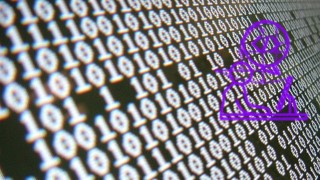Discrete Math
Learn the fundamentals of discrete mathematics with this comprehensive course. Covering topics such as numbers, sets, logic, and graph theory, this course is perfect for undergraduate students. With a combination of lectures and in-class exercises, you’ll gain a solid understanding of mathematical structures and their applications in computer science. Start your journey in discrete mathematics today.
What you’ll learn
- Properties of numbers; Conversions among bases; Sets; Logic and truth tables
- Boolean algebras; Relations and functions
- The theory of counting; Combinatorial formulas; Probability
- Introduction to Graph Theory
Discrete Mathematics is the study of mathematical structures that can be considered discrete rather than continuous. The study includes integers, statements in logic, and graphs. Concepts and notations from discrete mathematics are especially useful in studying and describing objects and problems in branches of computer science, such as computer algorithms, programming languages, cryptography, automated theorem proving, and software development.
This course will cover the following topics:
1. Properties of Numbers: Factors and Divisors; Greatest common divisor and least common multiple; Exponents and logarithms; Converting a number from one base to another.
2. Data Structures: Propositions and Logic; Truth tables; de Morgan’s laws.
3. Elements of Set Theory: the union and the intersection of sets; The complement of a set; A partition of a set; Method of Truth Tables, Mathematical Induction.
4. Boolean Algebras: Principle of Duality; Idempotent Laws; Absorption Laws; Nullity Laws; de Morgan’s Laws.
5. Relations and Functions: Equivalence Relations; One–One and onto Functions; Inverse functions.
6. The Counting Theory: Event and sample space; The Multiplication Principle; Combinatorial formulas; The Pigeonhole Principle
7. Probability: Probability Measures; Repeated Experiments; Conditional Probabilities; Bayes’ Formula and Applications.
8. Introduction to Graph Theory: Directed graph; Simple graph.
The course is taught in a way of lectures and in-class exercises combined. So when you reach the session for in-class exercises, you should stop watching the video to do the problems. When done, continue to watch the video to check your answers.
)
Who this course is for:
- Any undergraduate student







There are no reviews yet.